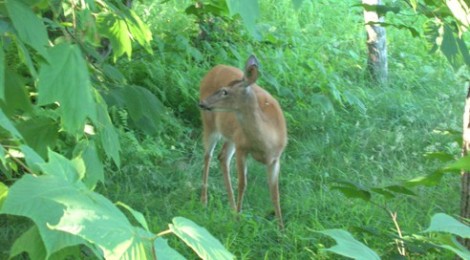
Outdoor blogger – Trail Camera Roundup
Craig Pearson is an avid hunter, outdoorsman, and adventurist. His main passions are hog hunting in Texas and writing about his many adventures. He currently blogs for night vision 4 less, a supplier of high quality night vision equipment.
Trail cameras, also known as camera traps and game cameras, are a great technology that has developed rapidly in recent years. These cameras have been used for decades in ecological research as a way to study and count animal populations. As the technology became refined and the cost dropped, it became a more viable option for property owners and hunters alike. Wildlife enthusiasts can use these low cost units to get unique and candid looks at animals in their natural habitat. Hunters can use the cameras to determine if an area is a viable hunting ground. Property owners can use them to what type of animals live on their property, which can be good for tracking pests and invasive species. Whatever the use scenario; trail cameras are a useful tool. Read on for some top picks in the low, middle, and high price points.
The main features to look for in a trail camera are photo quality, capture speed, and capture distance. As you might expect, the more you spend, the higher quality photos, faster speed, and greater distance you get. However, the top of the line equipment is not needed for all uses. The mere fact that you will be leaving the camera out in the open is an argument for buying cheap. But if you want the extra features and are confident your camera is secure or will not be tampered with, the high end cameras take great photos.
During my latest visit to my parents in Northern Idaho, I got the chance to give these cameras a try. And for the most part the results were all quite shocking. To make sure they were all given an equal chance, I used a location that I discovered when I was kid that always has deer roaming through it. I tried each camera on consecutive days in the same spot with approximately the same angle. I will discuss the results after describing each camera.
Wildview Digital Scouting Camera – $60
We will start at the low end with the Wildview Digital Scouting Camera. At $60, it is about as budget as you can get with a trail camera. Of course the lower cost means you only get a two megapixel sensor, 25 foot night range, and a slow capture speed. But for the price you get a competent trail camera that works at night and is more than capable of giving you a good idea of what game is about. Plus, you won’t have to worry too much about leaving it unattended. Full specs below
2 megapixel camera
20 IR LED night vision up to 25 feet
640×480 VGA Video recorder
Wide Angle Coverage (PIR)
4 Time Out Settings
Time/Date/Moon phase Stamping
Primos Truth Cam 46 – $100
This offering from Primos is a step up from the Wildview at nearly twice the price. But for that price bump you get a more than three times the megapixels, double the night vision range, and a 0.3 second active trigger speed, among other features such as password protection, a backlit display and battery life tested at over 50,000 photos. If you have the extra cash to spend, the Truth Cam is a good middle of the road option. Full specs below.
7 megapixel camera
46 IR night vision up to 50 feet
0.3 second active trigger speed, 1.5 second sleep trigger speed
Adjustable burst mode
Backlit display
Password protection
Over 50,000 photos on 8 AA batteries
Bushnell Trophy Trail Camera HD – $193
If you have got some money to spend, or want the best of the best, you can spring for the Bushnell Trophy Trial Camera HD. At almost twice the price of the previous option, it is a bit spendy. However, this option gives you HD recording capabilities. You get a 8 megapixel camera, 720p HD video recording with audio, 60 foot night vision range, and an industry leading 0.6 second trigger speed. This unit also features geotagging and temperature stamping among other features. If you want high resolution and quick trigger speed, this is the option for you. Full specs below.
8 megapixel camera
720p HD video with audio record
Programmable trigger interval: 1 sec. to 60 mi
Runs up to one year on one set of batteries
Images display date, time, moon phase, temperature, and name
60 foot night vision range
Lightning quick 0.6 second trigger speed
Surprisingly, even though I am a bit of a penny pincher, out of all three cameras, my preference went towards the Bushnell. Despite the high price tag, it did offer the clearest pictures and quickest picture taking speed, which, when dealing with all of the fast moving things in the wild, can be quite an important feature.
In second place was the Wildview due mainly to its low price tag. While it’s not the best in terms of picture quality, its pictures are still quite breathtaking knowing how little the camera that took them cost.
Lastly was the Primos. While not a bad camera, in fact it was still pretty good, it just seemed too plain in terms of features and capabilities to warrant a price tag as high as the one it has.
So if you are in the market for a trail camera, there are plenty of options available for any budget. You can even look beyond this list by using it as a guideline for price and features. Shop smart and have fun!
